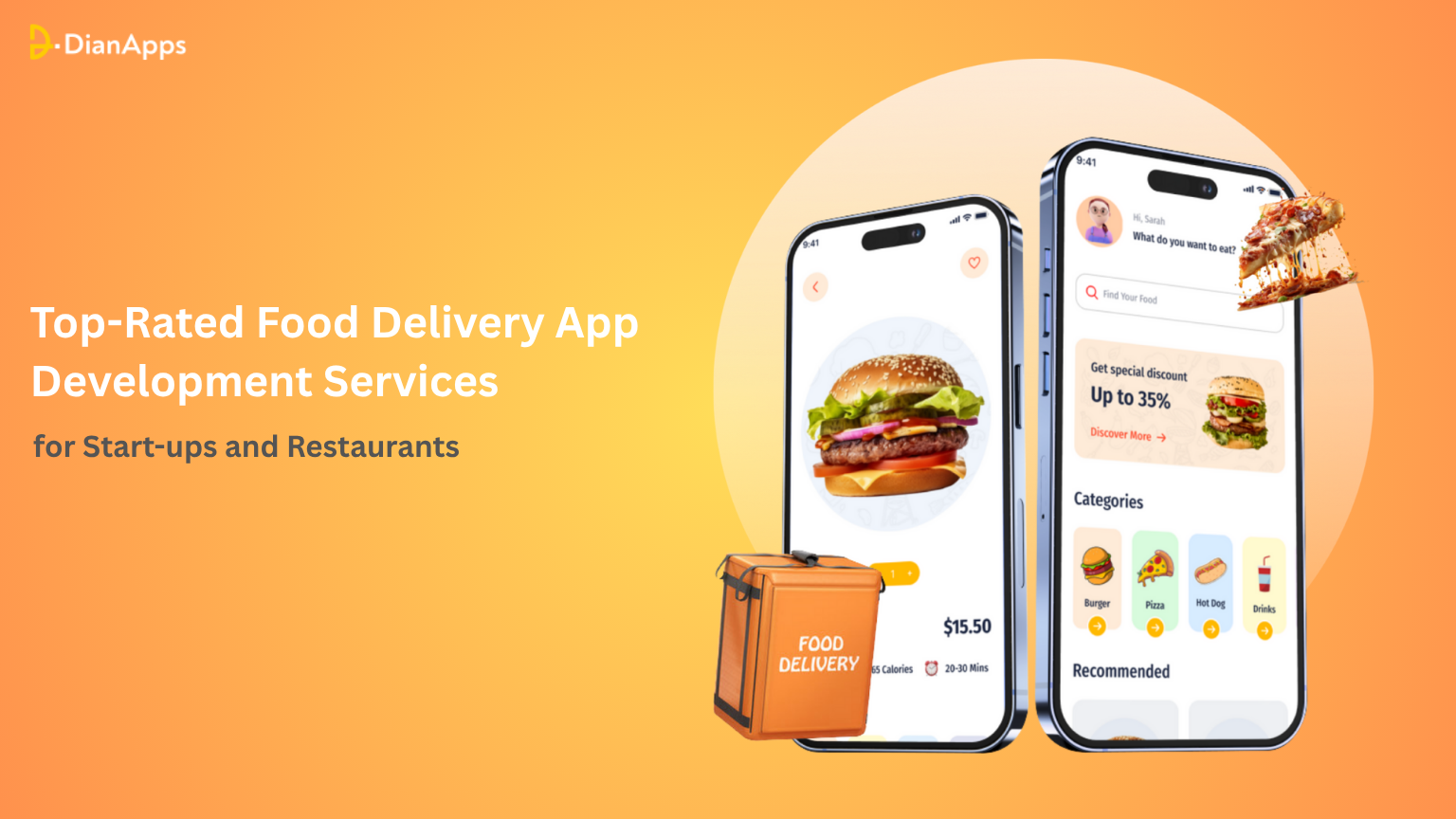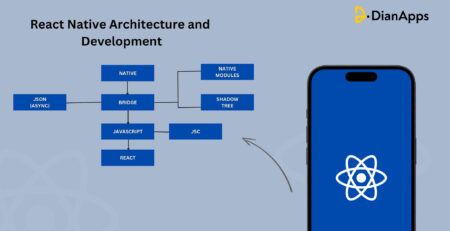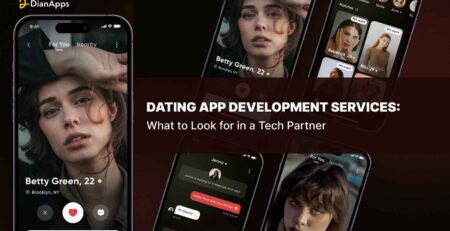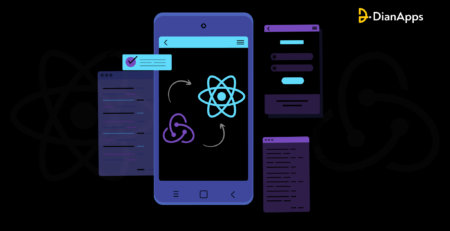Top-Rated Food Delivery App Development Services for Startups & Restaurants
Before 2020, food delivery was a backup plan, used occasionally, mostly for convenience. Fast forward to today, and it’s a non-negotiable part of the dining experience.
The shift wasn’t gradual. COVID-19 redefined consumer behavior overnight, turning digital food ordering into a necessity. Restaurants pivoted, cloud kitchens emerged, and startups saw an opening to disrupt a growing market.
And the numbers? They speak volumes.

According to GlobalNewswire, the global online food delivery market is projected to hit $223.7 billion by 2027, growing at a CAGR of 11.44% from 2022.
That’s not just industry growth, it’s a signal.A signal that the market is hungry for better, faster, and smarter food delivery experiences.
For startups and restaurants alike, this is more than a trend, it’s a strategic move. A well-built food delivery app helps you:
- Expand your reach
- Strengthen customer loyalty
- Stay competitive in an on-demand-first world
Meet the customer expectations with the on-demand app development.
And to make it all happen? You need the right food delivery app development services, tailored to your brand, your users, and your growth goals.
Let’s break down exactly why that matters.
Why Startups & Restaurants Need Custom Food Delivery App Development Services
When it comes to food delivery, one-size-fits-all no longer works. With the rise of customer expectations, market saturation, and fierce competition from platforms like Zomato, DoorDash, and Uber Eats, customization is no longer a luxury; it’s a necessity.
Here’s why startups and restaurants are turning to custom food delivery app development services:
1. Tailored User Experience
Generic platforms come with a generic UX. A custom-built app benefits your customers with an enjoyable smooth, branded, and intuitive experience, from browsing the menu to tracking their delivery in real time.
2. Stronger Brand Identity
Instead of sharing a platform with hundreds of competitors, a custom app puts your logo, tone, and vision front and center. It builds brand recall and loyalty, which aggregator platforms can’t offer.
3. Flexible Features & Integrations
Whether it’s integrating loyalty programs, CRM tools, POS systems, or offering regional language support, custom apps allow you to build exactly what your business needs, no more, no less.
4. Improved Profit Margins
Aggregator apps take a hefty commission, sometimes up to 30%. With your own app, you reduce middlemen and gain full control over your revenue streams, pricing models, and customer data.
5. Scalable Infrastructure
As your user base grows, your app needs to keep up. Custom food delivery apps are designed with scalability in mind, helping startups grow from local launches to regional or even national operations.
6. Real-Time Data & Analytics
Understand what sells, when users order, and how your delivery system performs, all through custom analytics dashboards tailored to your KPIs. This data isn’t just valuable, it’s business-critical.
Bottom line: If you want to take benefits of having a food delivery app, a custom solution isn’t optional, it’s essential.
Types of Food Delivery Apps You Can Develop
Before diving into development, it’s crucial to define the model your food delivery app will follow. Not all food delivery apps are built the same, each serves a different purpose, user base, and monetization path. Choosing the right type lays the foundation for your app’s success.
Here are the most common and high-performing models in the food delivery ecosystem:

1. Single Restaurant App (Branded Model)
Designed for individual restaurants that want to offer direct ordering without third-party platforms.
Best for:
- Local restaurants
- Café chains
- Cloud kitchens
Key Features:
- Menu browsing
- Table reservations (optional)
- Online payments
- Real-time order tracking
- Loyalty programs and a feedback system
2. Aggregator Model (Multi-Restaurant Marketplace)
This is the model used by giants like Swiggy, Zomato, and Uber Eats, bringing multiple restaurants under one app.
Best for:
- Startups entering the delivery marketplace
- Investors planning to build large-scale food networks
Key Features:
- Restaurant listings
- Search filters (cuisine, rating, price)
- Integrated logistics or third-party delivery
- Commission-based revenue model
3. Cloud Kitchen App
Focused entirely on delivery-only kitchen models. No dine-in, no storefront, just pure logistics and performance.
Best for:
- Delivery-first businesses
- Restaurants expanding into new locations without physical outlets
Key Features:
- Optimized for fast ordering
- Integrated kitchen management system
- Real-time delivery updates
- Order analytics for inventory planning
4. Order & Delivery Management App (B2B Solution)
Built for restaurant chains or food delivery businesses that want to streamline backend operations in addition to front-end ordering.
Best for:
- Restaurant franchises
- Meal subscription businesses
- Catering services
Key Features:
- Admin dashboard for managing orders, staff, and drivers
- Driver delivery assignment
- Route optimization
- Multi-location kitchen and outlet tracking
5. Platform-as-a-Service (White Label App)
A ready-made framework with customization capabilities, perfect for fast go-to-market strategies.
Best for:
- Entrepreneurs testing market viability
- Restaurant chains avoiding the build-from-scratch route
Key Features:
- Pre-built core modules
- Quick setup and deployment
- Cost-effective for MVPs
- Limited customization depending on the provider
Each of these models has its own set of tech, cost, and feature implications, which we’ll break down in the next section.
Also read: Why does your restaurant need a business mobile app to grow and flourish.
Food Delivery App Development Services: Features, Costs, and Tech Stack Explained
Whether you’re a startup entering the food tech space or a restaurant ready to go digital, understanding what goes under the hood of a successful food delivery app is non-negotiable.
This section outlines the core features, tech stack, and cost breakdown, so you know exactly what to expect before development begins.
Must-Have Features of a Food Delivery App
To meet today’s user expectations, your app must go beyond just “place order” and “track delivery.” Here’s what a top-performing food delivery app should include:
User App Features:
- Easy sign-up/login (email, phone, social login)
- Smart menu browsing with filters
- Real-time order tracking
- Multiple payment options (credit, wallet, COD)
- Push notifications for offers/order updates
- Ratings & reviews
- Loyalty points & rewards system
Restaurant Dashboard:
- Menu & inventory management
- Order acceptance and preparation time control
- Real-time status updates
- Access to analytics & customer feedback
- Profile and offer customization
Delivery Partner App:
- Task assignment with optimized route maps
- GPS navigation
- Delivery status updates (picked up, en route, delivered)
- Order history & performance tracker
- In-app communication with the customer & restaurant
Admin Panel
- Manage users, restaurants, delivery partners
- Access control & roles
- Commission settings
- System-wide offers and promo codes
- Reporting and analytics dashboard
Bonus Features (That Add Real Value)
- AI-based search & recommendations
- In-app chat or support
- Scheduled orders
- Dynamic pricing or surge delivery fees
- Voice ordering via AI assistants
Tech Stack You’ll Likely Need
The right tech stack ensures performance, scalability, and security. Here’s a common stack used for food delivery app development:
Frontend (Mobile App)
- React Native / Flutter (Cross-platform apps)
- Swift for iOS, Kotlin for Android (if building natively)
Want to know the key features that affects the development cost of food delivery app in React Native? Here, take a look at the guide!
Backend
- Node.js, Django, or Laravel
- RESTful APIs / GraphQL
- Socket.IO (for real-time updates)
Database
- MongoDB, PostgreSQL, or MySQL
- Redis (for caching & speed)
Cloud & Hosting
- AWS, Google Cloud, or Firebase
- Cloudflare (for security and performance)
Integrations
- Google Maps / Mapbox (for location & navigation)
- Razorpay / Stripe / PayPal (for payments)
- Twilio / SendGrid (for SMS, email, OTP)
- Firebase Analytics / Mixpanel (for performance tracking)
Cost Breakdown of Food Delivery App Development
The cost of your food delivery app depends on complexity, features, platform(s), and team location.
Estimated Cost Table:
 Also read: Launching a white label food delivery app in the USA
Also read: Launching a white label food delivery app in the USA
Factors Affecting Cost
- Number of platforms (iOS, Android, Web)
- Custom vs. template-based design
- Integration complexity (payment, delivery, AI, etc.)
- Backend architecture & scalability
- QA & post-launch support services
How to Choose the Right Food Delivery App Development Partner?
Choosing a food delivery app development service isn’t just about who can code the fastest, it’s about partnering with a team that understands the business, the technology, and the user behavior driving this industry.
Here’s how to make sure you choose the right custom software development company for long-term success:

1. Evaluate Industry Experience
Look for a company that has experience specifically in food delivery or on-demand app development. Ask for live app links, case studies, and performance metrics. A generic software developer might miss the finer details like delivery logic, surge pricing, or customer retention mechanics.
2. Check End-to-End Capabilities
From UI/UX design services to backend development, API integration, and post-launch support, your ideal partner should offer a complete development lifecycle, not just code delivery. You don’t want to hire multiple vendors to build one app.
3. Understand Their Tech Approach
A strong tech partner will suggest scalable architecture, use modular coding practices, and explain their devops cycle clearly. Ask how they’ll handle traffic spikes, live order updates, and secure payment integration.
4. Clarify Communication & Collaboration
Transparent communication is non-negotiable. Ask about:
- Their project management tools (e.g., Jira, Trello)
- Delivery timelines and sprint structures
- Availability for weekly calls or updates
Smooth collaboration now saves costly confusion later.
5. Prioritize Customization Over Templates
Avoid development teams that push only white-label or clone apps. While they may seem faster, they often limit scalability and flexibility. Look for partners who take time to understand your unique business model and offer tailored features.
6. Ask the Right Questions
Don’t just ask how long it takes. Ask:
- How do you ensure real-time tracking accuracy?
- Can we scale the app to add new features in future phases?
- Who owns the source code after launch?
- What security practices are followed during development?
7. Look for Long-Term Support & Maintenance
The launch is just the beginning. You’ll need regular updates, bug fixes, and possibly new feature rollouts. Make sure your partner offers support post-deployment, with clear SLAs.
Choosing a development partner is like choosing a co-founder for your app, they can make or break your product. Take the time to evaluate wisely.
Final Thoughts
The food delivery industry isn’t just booming, it’s evolving faster than ever. With rising consumer demand, shifting digital habits, and technology advancing at record speed, now is the time to capitalize.
Whether you’re a budding startup or a seasoned restaurateur, investing in custom food delivery app development services gives you more than just a platform, it gives you control, brand power, and direct access to your customers.
But remember: it’s not just about building an app. It’s about building the right app, backed by strategy, optimized for users, and powered by scalable tech.
At DianApps, we specialize in turning food tech ideas into powerful digital products. From MVPs to full-scale aggregator platforms, we build custom solutions that drive growth, loyalty, and revenue.
Let’s build your next big food delivery experience. Contact us today to get started




